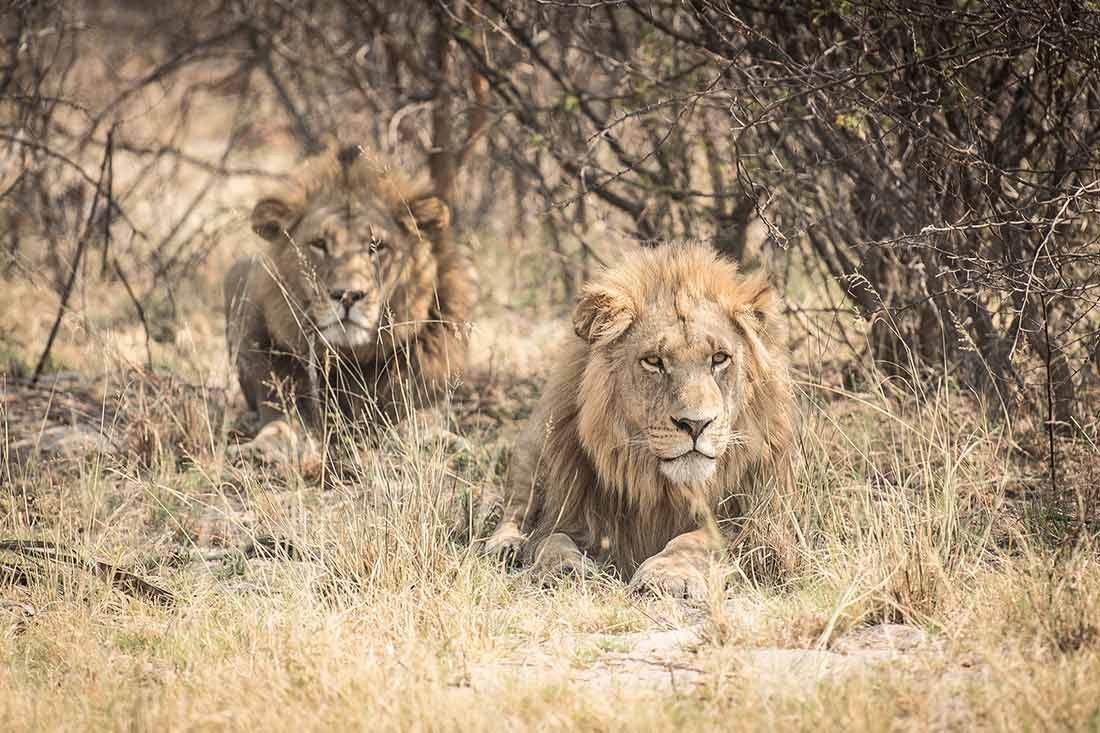Roaming the wild landscapes of our planet, the world’s largest cats are some of the most majestic and awe-inspiring creatures on Earth. With their graceful movements, powerful bodies, and striking appearances, these felines have captured the human imagination for centuries.
From the vast savannas of Africa to the dense forests of Asia and the remote jungles of South America, the worlds largest cats dwell in various habitats across the world. You can see some of these amazing creatures on a private Tanzanian safari.
Map of the Locations of the World’s Largest Cats
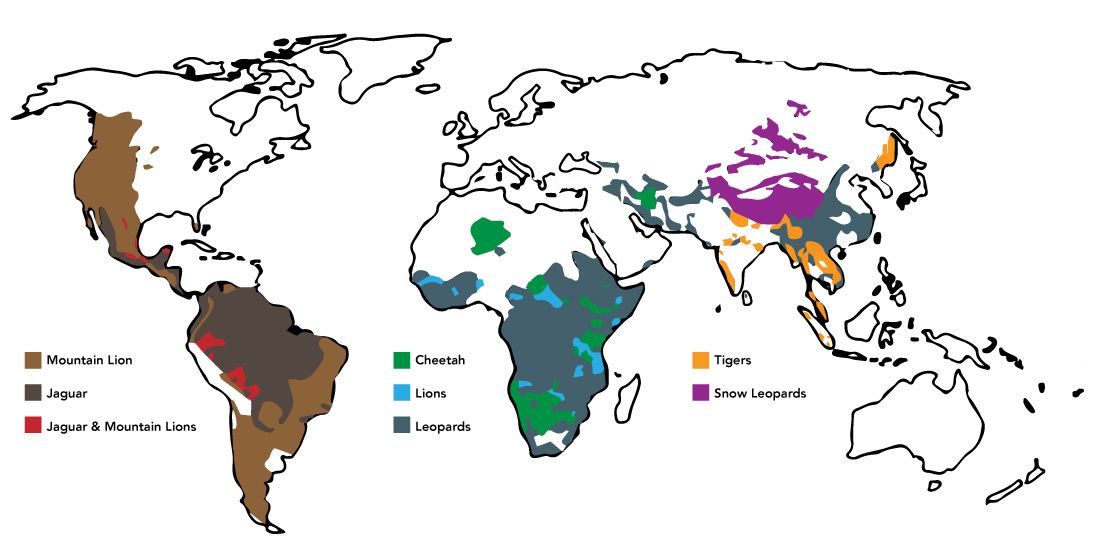
Tigers (Panthera tigris)

Tigers are the largest of all big cats. They are easily identified by their striking coat patterns and solitary behavior. Males reach lengths of up to 10 feet (3 meters) and can weigh up to 660 pounds (300 kilograms) in some cases.
Siberian tigers, also known as Amur tigers, are the largest subspecies of tigers. Males are the largest among all big cats. They can reach sizes of up to 11 feet (3.3 meters) in length and weighing up to 800 pounds (360 kilograms).
They are native to Asia and roam in countries such as India, Bangladesh, Nepal, Bhutan, Thailand, and Indonesia. Tigers inhabit a variety of terrains, including tropical rainforests, mangrove swamps, grasslands, and taiga forests.
There are six living subspecies of tigers: Bengal, Indochinese, Malayan, Siberian, South China, and Sumatran. Yet, tigers are also the most endangered of all big cats. All six tiger subspecies are either endangered or critically endangered. This is due to habitat loss, poaching, and illegal wildlife trade.
Lions (Panthera Leo)
Lions nicknamed the “king of the jungle” are perhaps the most iconic of all big cats. They are native to Africa and live in grasslands, savannas, and scrub forests across the continent. Countries such as Kenya, Tanzania, South Africa, Botswana, and Zimbabwe are home to these magnificent creatures.
Lions have a social behavior, living in prides consisting of several females, their offspring, and a few males. Males are recognizable by their distinctive manes, which can vary in color and length. Lions are usually seen hunting in groups. They use their strength and teamwork to bring down large prey such as wildebeest, zebras, and buffalo.
Male lions can reach lengths of up to 9 feet (2.7 meters) and weigh up to 500 pounds (227 kilograms) or more. Females are generally smaller than males. They measure around 8 feet (2.4 meters) in length and weigh around 300 pounds (136 kilograms) on average.
Leopards, jaguars, and snow leopards
Leopards, jaguars, and snow leopards are smaller than tigers and lions. Males weigh between 100 to 250 pounds (45 to 113 kilograms) on average.
Leopards (Panthera pardus)
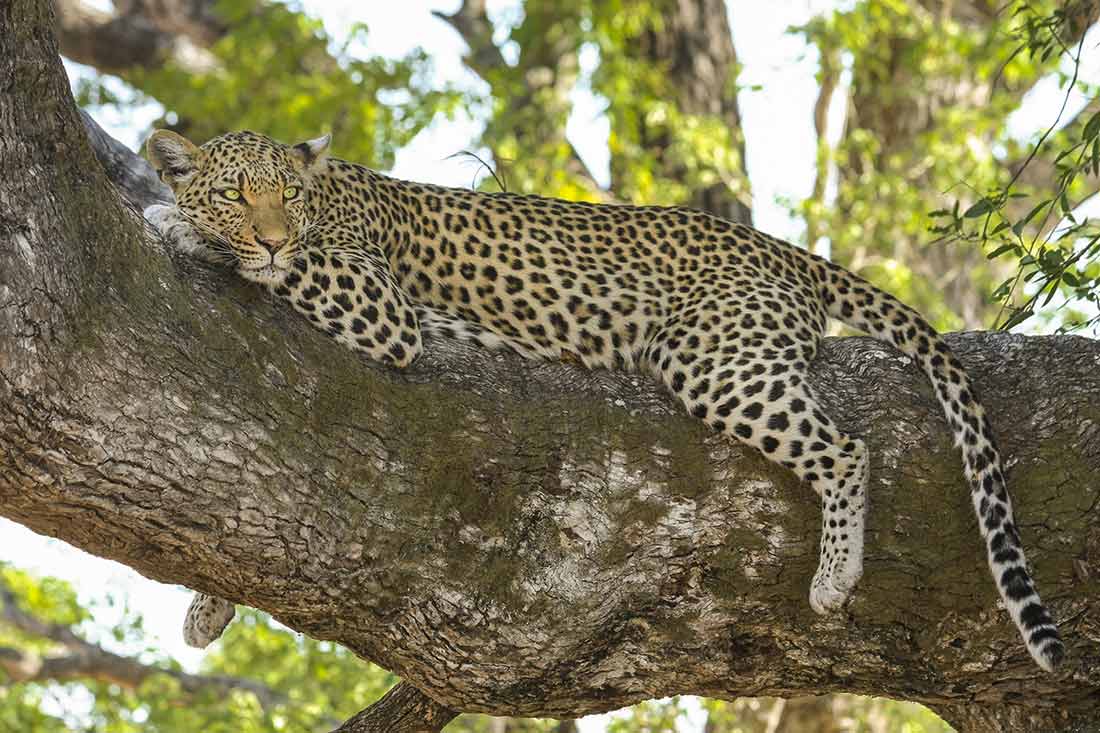
Leopards are solitary and elusive big cats known for their adaptability to a wide range of habitats. They live in various parts of Africa. This includes the countries of Kenya, Tanzania, South Africa, and Botswana. They are also in Asia—India, Sri Lanka, and Southeast Asia.
Leopards can thrive in diverse habitats such as dense forests, savannas, and even deserts. They are proficient tree climbers. This makes them skilled hunters of arboreal prey. Leopards are also known for their adaptability and ability to survive near human populations. This has helped them persist in some areas despite habitat loss.
Jaguars (Panthera onca)
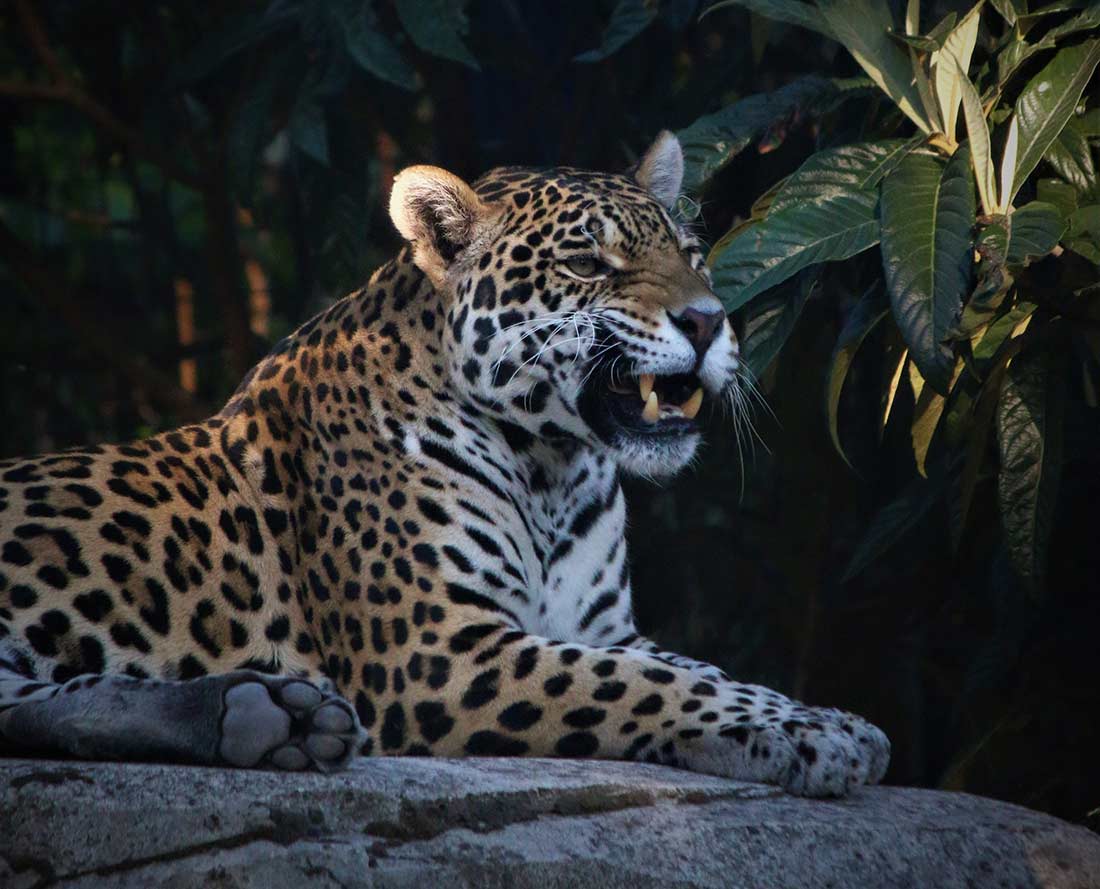
Jaguars are the largest big cats in the Americas. Their coats have a distinctive pattern, which features rosettes. They are found in a variety of habitats, including rainforests, swamps, and grasslands. They roam throughout the countries of Mexico, Brazil, Argentina, and Belize. They travel as far north as southern Arizona. Jaguars have powerful jaws and are excellent swimmers. They frequently hunt for prey in rivers and lakes. They are also known for their ability to adapt to different prey species, including fish, turtles, capybaras, and even caimans.
Snow leopards (Panthera uncia)
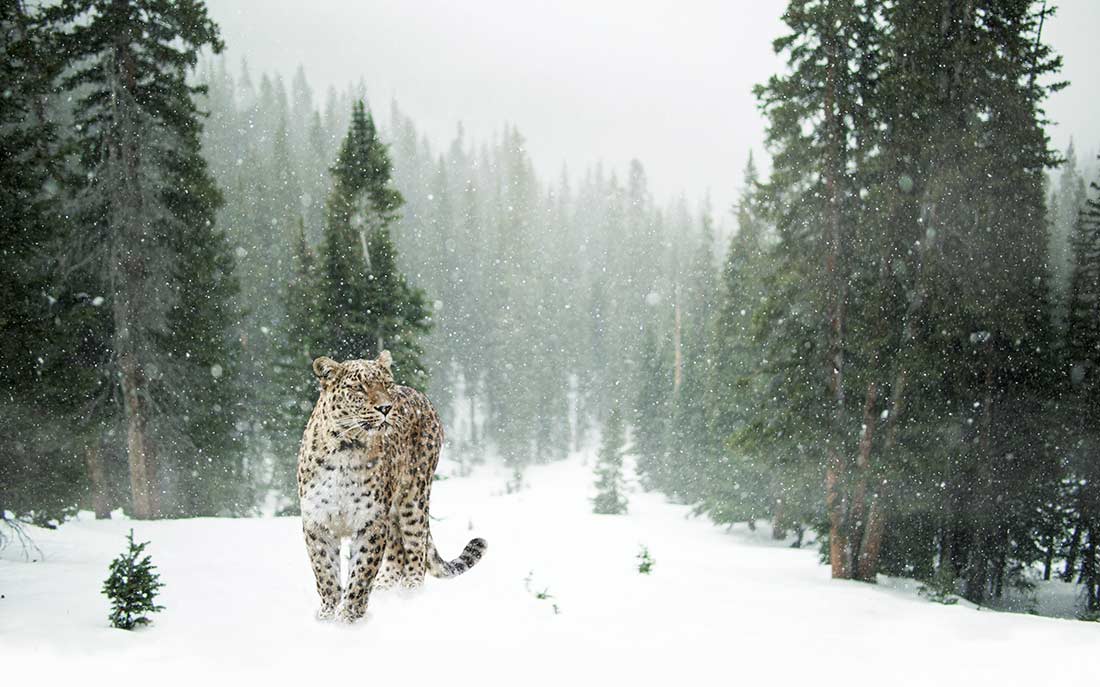
Snow Leopards are magnificent and elusive big cats. They are native to the rugged mountains of Central Asia. They have adapted to life in harsh, high-altitude environments. Their stunning coat of thick, smoky gray fur with black spots provides excellent camouflage in their snowy habitat.
Snow leopards are medium-sized big cats. Adult snow leopards usually weigh between 60 to 120 pounds (27 to 55 kilograms), with males being slightly larger than females.
Cheetahs (Acinonyx jubatus)
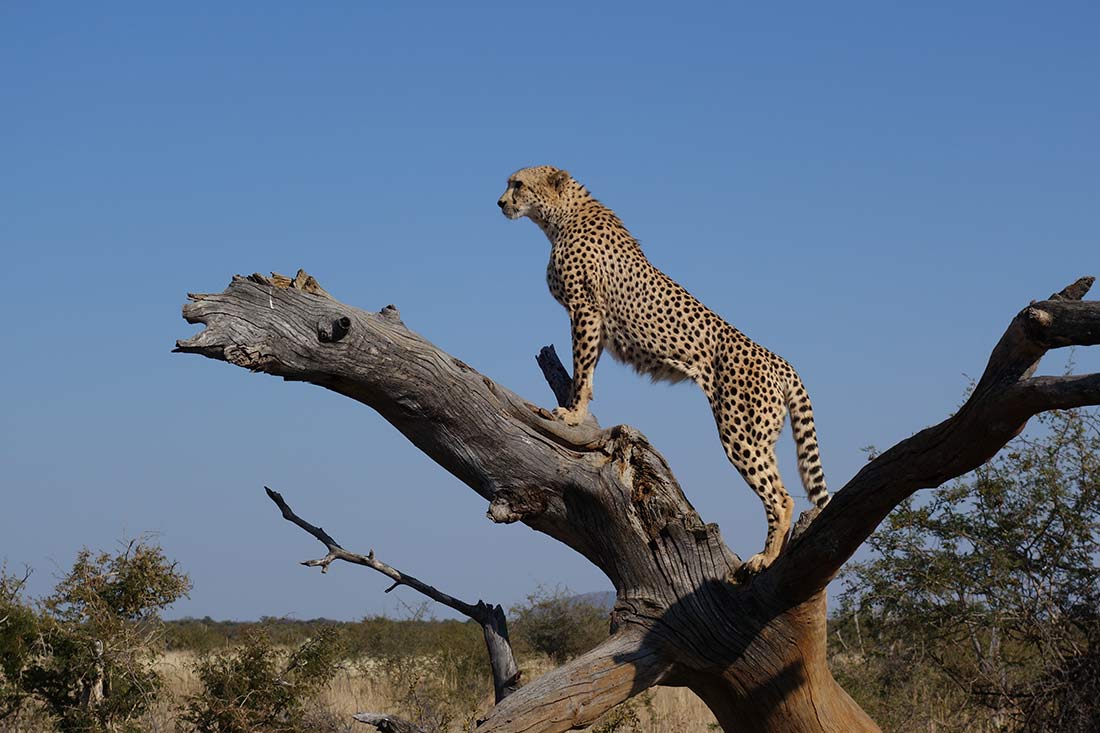
Cheetahs are the fastest land animals on Earth. They inhabit many countires in Africa, including Kenya, Tanzania, Namibia, and South Africa. Cheetahs are well adapted to open grasslands and savannas. They can use their speed to chase down prey such as gazelles and springboks. Unlike other big cats, cheetahs are usually solitary animals, with males forming temporary coalitions.
They are smaller than the other big cats, with males weighing between 100 to 145 pounds (45 to 65 kilograms) on average.
It’s worth noting that a big cat size can vary among individuals and populations. There can be an overlap in size between different species and subspecies. The exact size of a big cat can depend on various factors such as age, sex, genetics, habitat conditions, and availability of prey.
Additionally, big cats, like all wildlife, are subject to ongoing research and discoveries can provide updated information about their size and other characteristics.
Isn’t The Panther One of the World’s Largest Cats?
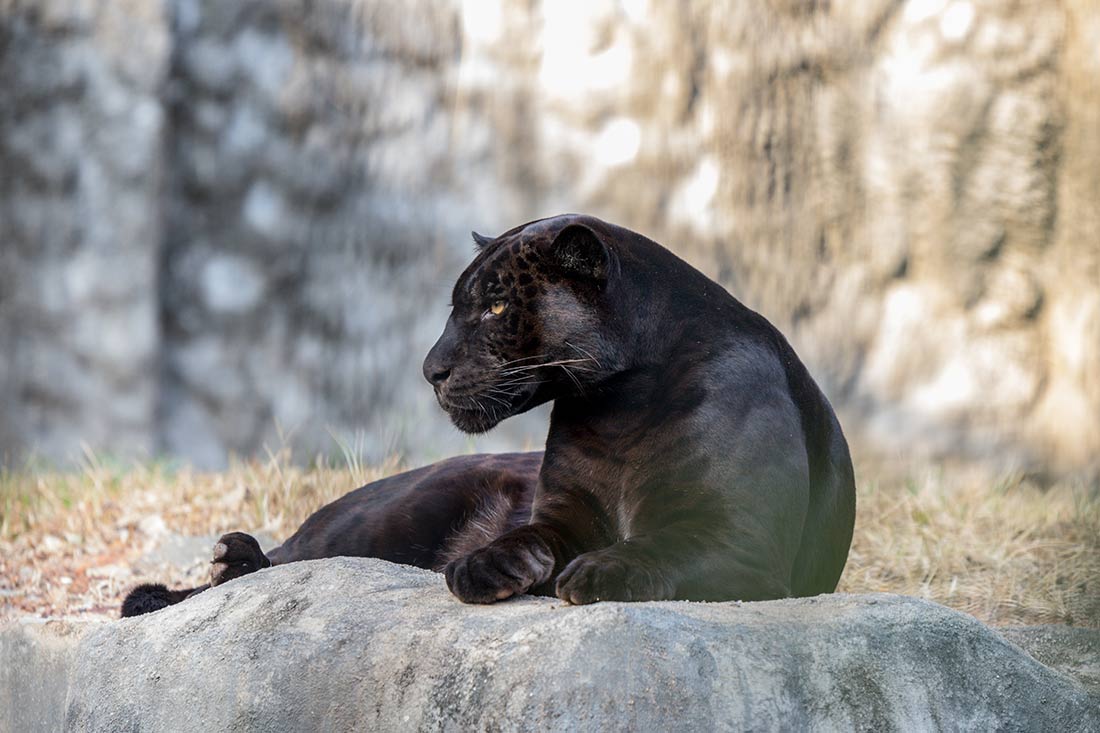
Actually, the panther is a large member of the big cat family, found in Asia, Africa, and the Americas. However, it is not a distinct species itself, but rather a term used to refer to any black-colored feline of the big cat family.
Panthers generally fall in the leopards or jaguars family. Even though they are not a separate species, they are endangered. This is due to the declining populations of leopards and jaguars in their natural ranges.
Mountain Lion (Puma concolor)
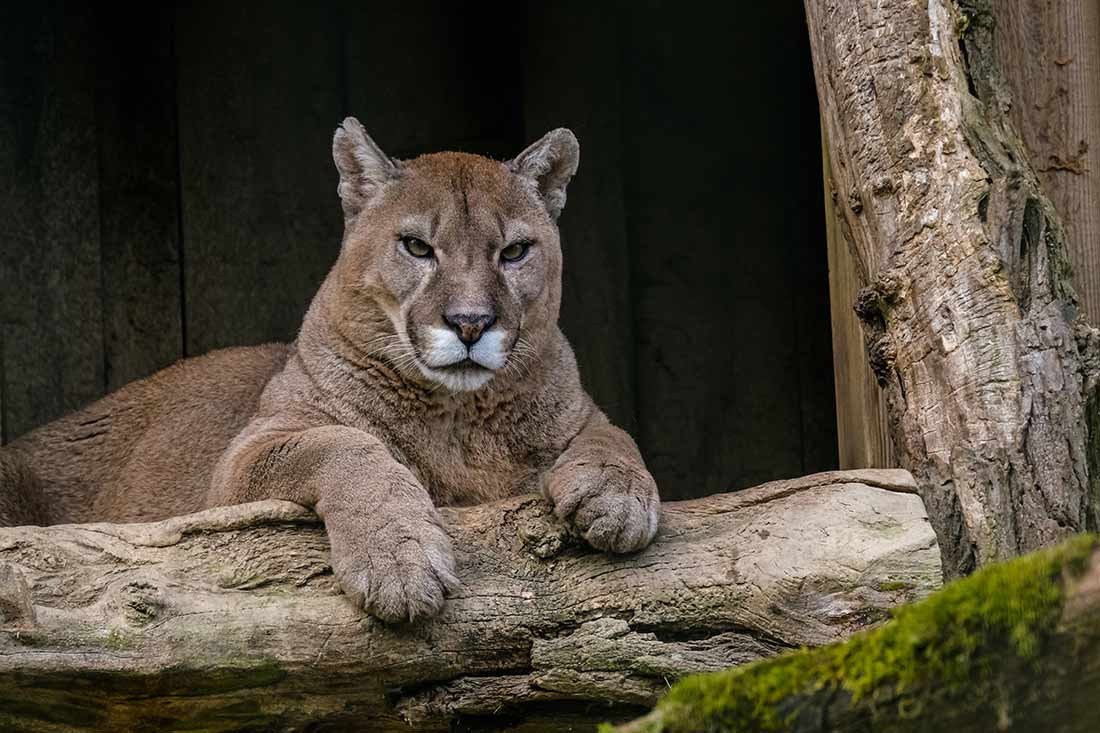
The mountain lion, also referred to as the cougar, catamount, or puma, is widely recognized as a big cat just not from the genus Panthera. It does hold the title of being the largest wildcat species in North America. Known for its agility, stealth, and exceptional hunting abilities, the mountain lion possesses a muscular body and a long tail. Its remarkable leaping ability and tree-climbing skills are also noteworthy. As a top predator in its ecosystems, the mountain lion plays a critical role in maintaining ecological balance.
It’s important to note that the term “big cat” refers to the world’s largest cats belonging to the genus Panthera. They are lions, tigers, leopards, jaguars, and snow leopards. Other big cats, such as mountain lions, bobcats, or lynx are not included in this specific classification.
Final Thoughts
Does reading about these majestic creatures get you fired up to see some in real life? You could go to your local zoo and see them, but why would you do that? Zoos are great for children on a field trip, but if you want to see these amazing animals in their natural environment book a safari. After your Kilimanjaro climb what better way to relax than to book a thrilling adventure in the worlds greatest safari parks? On our safaris, you’ll get up close and personal with several of world’s largest cats listed above. The lion, leopard, and cheetah can be seen hunting their prey, or devouring one they already caught. Our expert guide will accompany you and share his wealth of knowledge about these elusive creatures.
What are you waiting for? Book a safari today.

